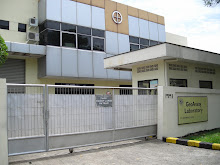Process mineralogy differs in practice from “geological”
mineralogy in the questions it answers. After
characterisation of mineral material in rocks the
geological mineralogist is principally interested in
questions of petrogenesis. How did these minerals form?
What do they tell us about the origin of the rock in which
they occur? The process mineralogist characterizes ore
minerals and processing products with different
questions in mind, such as: “How can these minerals be
separated? In which minerals are the elements of value?
Is there a mineralogical reason for low recovery? Are
there surface coatings on particles that are interfering
with flotation?” The scope of process mineralogy is
nicely illustrated in the books of William Petruk (Petruk,
2000), Claudia Gasparrini (1993), Meurig Jones (1987)
and the proceedings of meetings of the International
Congress of Applied Mineralogy and the Commission
on Applied Mineralogy of the International
Mineralogical Association (see, for example, Hagni,
1995).
Specialist process mineralogists are few in number
and tend to work in technical laboratories of major
mining houses, government research agencies (such as
CANMET in Canada and Mintek in South Africa), a few
universities (for example, at University of Missouri –
Rolla) and consultancies (for example, Amtel in London,
Ontario). Many of the applied mineralogists who have
shown the value of mineralogy in metallurgy are nearing
the end of their professional careers. Regrettably, few
mineralogists are being trained to take over their work.
The increasing complexity and lower grades of many
ores being processed today put further demands on
those responsible for the design and operation of
metallurgical plants. This will be evident from the
following description of problems encountered in the
processing of refractory gold ores (ores that show low Au
recovery after cyanide leaching) and their resolution
through application of mineralogical studies. This
illustration draws on case studies being prepared for the
course and, ultimately, on the work of one us (Vaughan,
1997; Vaughan and Corrans, 1997; Vaughan and Kyin,
2002).
The problem with processing of gold ores is that
often much of the gold is not present in the ores as the
familiar native metal, but rather may be present as gold
tellurides, antimony and bismuth compounds, or
“invisible” gold (gold in solid solution within sulphide
crystal lattices). Only native gold is easily soluble in
alkaline cyanide solution (the usual way of extracting
gold); for the other gold minerals more complicated
pre-treatment is required (e.g. roasting or bacterial
oxidation). It is sometimes very difficult for metallurgical
test work to determine which of these types of gold are
present in ores and the relative proportions of each type.
Process mineralogy is essential in understanding these
ores. The mineralogist may need to use reflected light
microscopy, electron microprobe and/or secondary ion
mass spectroscopy (SIMS) to fully determine gold
deportment in a complex gold ore. In particular, SIMS is
usually required to accurately measure invisible gold in
sulphides. For example, if an ore contains fine-grained
native gold particles locked in pyrite, then fine grinding
possibly could be used to liberate the gold. However, if
the gold is present as invisible gold in pyrite, then fine
grinding is not an option and more expensive techniques
must be used (Vaughan and Corrans, 1997). It makes
good sense to correctly identify the deportment of gold
prior to designing a plant.
written by natalia(dita)












